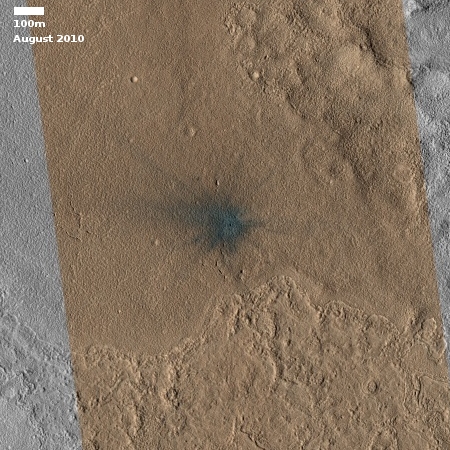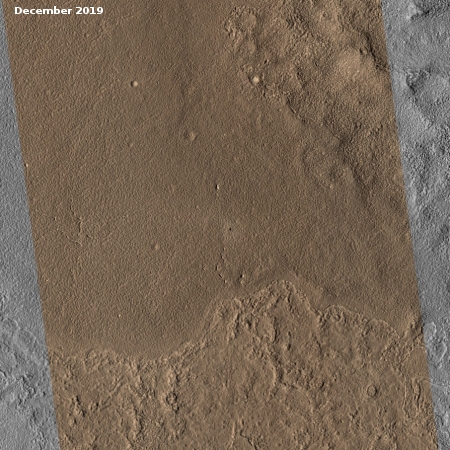Skiing dry ice boulders on Mars
Cool image and video time! The image to the right, cropped and reduced to post here, shows something that when I spotted it in reviewing the newest image download from the high resolution camera on Mars Reconnaissance Orbiter (MRO), I found it very baffling. The photo was taken on March 3, 2020, and shows an incredible number of linear groves on the slope of a large dune inside Russell Crater, located in the Martian southern highlands at about 54 degrees south latitude.
If these were created by boulders we should see them at the bottom of each groove. Instead, the grooves generally seem to peter out as if the boulder rolling down the slope had vanished. Making this even more unlikely is that the top of the slope simply does not have sufficient boulders to make all these groves.
The image was requested by Dr. Candice Hansen of the Planetary Science Institute in Tucson, Arizona, who when I emailed her in bafflement she responded like so:
» Read more
Cool image and video time! The image to the right, cropped and reduced to post here, shows something that when I spotted it in reviewing the newest image download from the high resolution camera on Mars Reconnaissance Orbiter (MRO), I found it very baffling. The photo was taken on March 3, 2020, and shows an incredible number of linear groves on the slope of a large dune inside Russell Crater, located in the Martian southern highlands at about 54 degrees south latitude.
If these were created by boulders we should see them at the bottom of each groove. Instead, the grooves generally seem to peter out as if the boulder rolling down the slope had vanished. Making this even more unlikely is that the top of the slope simply does not have sufficient boulders to make all these groves.
The image was requested by Dr. Candice Hansen of the Planetary Science Institute in Tucson, Arizona, who when I emailed her in bafflement she responded like so:
» Read more











